Looking to lock perfect focus on stars every time? Tamron’s new Astro Focus Lock in the TAMRON Lens Utility™ makes night sky photography easier, faster, and more accurate—no more guesswork, no more soft stars. This guide shows you how Astro Focus Lock works, why Astrophotographers love it, and how to get sharper, more consistent night sky images.
Astrophotographers know that achieving perfect focus on stars is one of the biggest challenges in night sky photography. Temperature changes, humidity shifts, and tiny movements on the focus ring can ruin an otherwise incredible shot. Tamron’s Astro Focus Lock, built into the TAMRON Lens Utility™, solves that problem by delivering reliable, repeatable infinity focus with a single tap. In this article, we break down how Astro Focus Lock works in real shooting scenarios, how it improves your workflow, and why it’s quickly becoming an essential tool for capturing the Milky Way, deep sky subjects, and night landscapes.
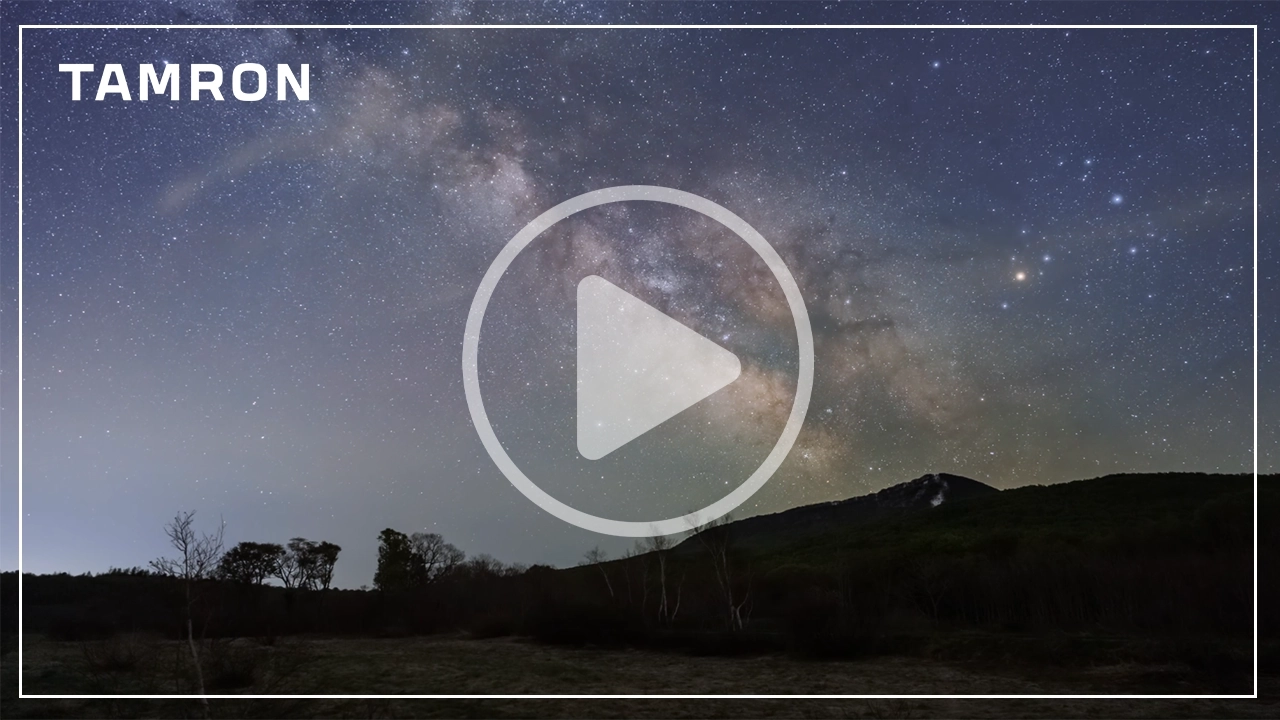
By Hiroyuki Narisawa
What You’ll Learn in This Article:
- How to use Astro Focus Lock for fast and accurate star focusing
- Tips to avoid common astrophotography focusing errors
- Adjusting to shifting environmental conditions like humidity and temperature
- How to fine-tune infinity focus without touching your lens
- Recommended Tamron lenses for night sky photography
The three principles of photography are 1) focus, 2) exposure, and 3) composition. If you nail 1 and 2, you can produce something that will be accepted as a photograph. But in the astrophotography genre — the photography of night skies – nailing those two principles can be decidedly tricky, and many photographers have issues trying to solve them.
Achieving sharp focus can be influenced by factors like lens performance, focal length, and shooting conditions. As a YouTuber, I’ve had many people come to me for advice on their astrophotography focusing challenges. While I’ve tried to help, I haven’t yet found a perfect solution that works for everyone.
That was until TAMRON introduced a feature that might just be the answer to all those troubles. I’m talking about the new Astro Focus Lock (Astro FC-L), available through the TAMRON Lens Utility™ .
Preparation for Astrophotography
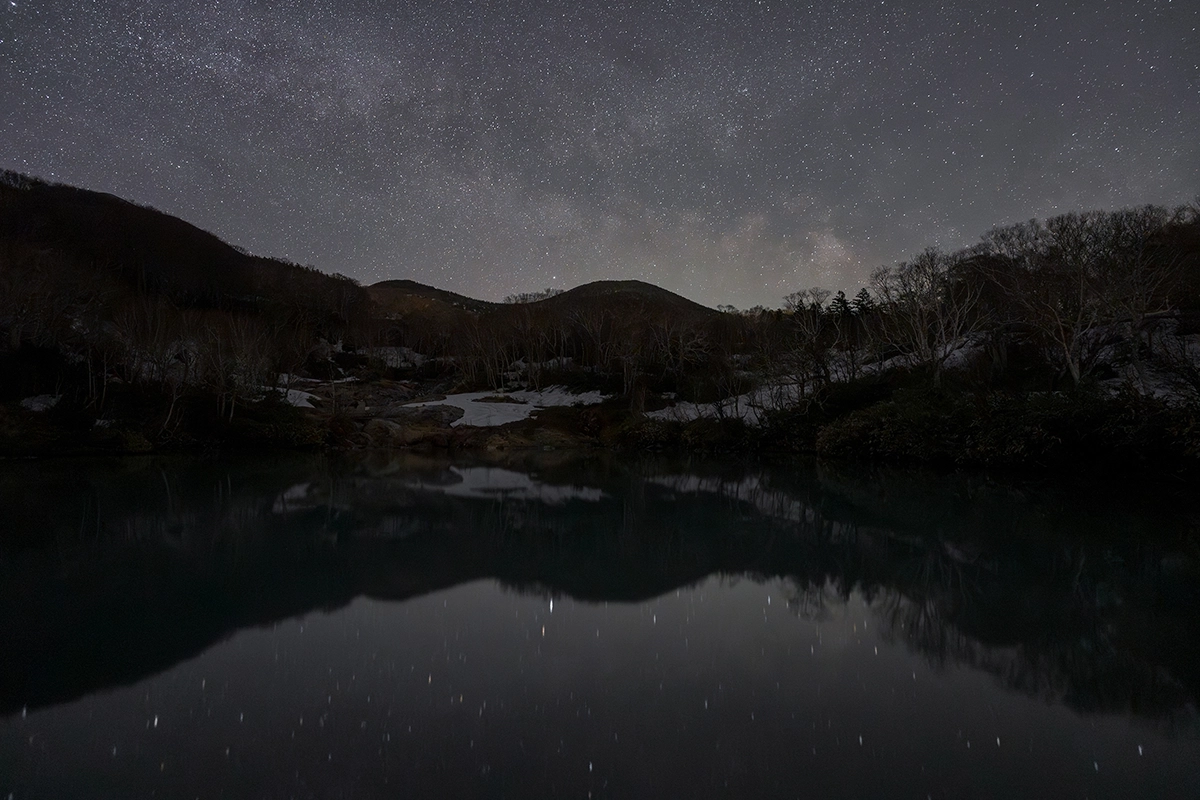
The method for achieving proper focus in astrophotography is to enlarge a bright light source—such as a star or streetlight—and use manual focusing to make that light source appear as small as possible.
That’s easy to describe on paper, but in practice, it can be quite difficult. Even in total darkness, it’s often hard to make things out on an LCD monitor. Photographers’ eyesight can vary, and focus can also be influenced by air temperature and humidity.
Many photographers have likely experienced getting the focus just right at the beginning of a shoot, only to continue shooting for an extended period—then later discover, after checking their photos at home, that many shots were out of focus. Achieving sharp focus becomes even more challenging when using standard or telephoto lenses instead of wide-angle ones.
Sometimes, touching the focus ring causes camera shake, making it hard to lock onto a light source. Other times, there simply may not be any bright stars in the area you want to photograph, leaving you without a clear reference point for focusing.
Enter the Astro Focus Lock Feature on the TAMRON Lens Utility™ App
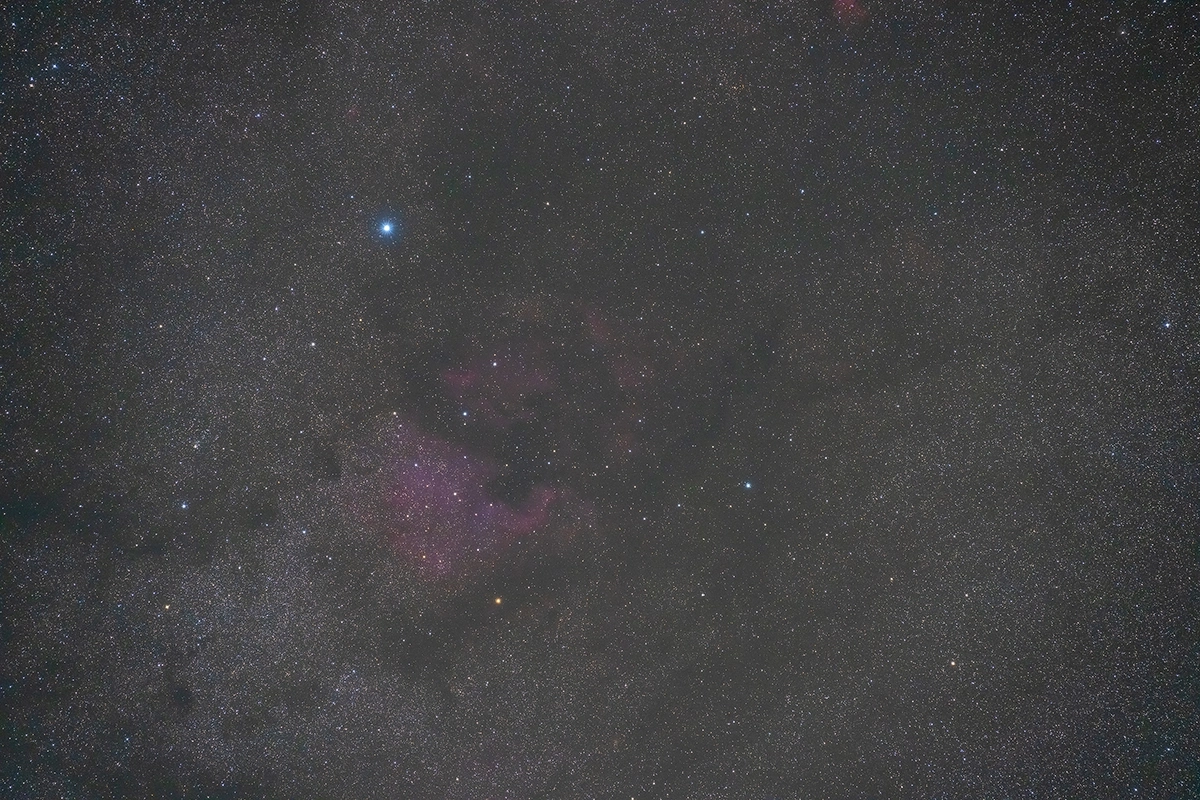
An effective way to address these challenges is Astro Focus Lock (Astro FC-L), the new feature offered through the TAMRON Lens Utility™. Lenses are designed with a specific infinity focus point, known as the optical infinity focus.
Astro FC-L can be used with TAMRON lenses equipped with a USB-C port. By connecting the lens to a computer or Android smartphone, the app automatically recognizes the lens and, with a single tap, focuses it to its optical infinity focus point.
The feature is simple and intuitive. With the mobile version, just connect the lens to an Android device using a USB cable and tap [Astro FC-L]. The lens will instantly adjust to the optical infinity focus point.
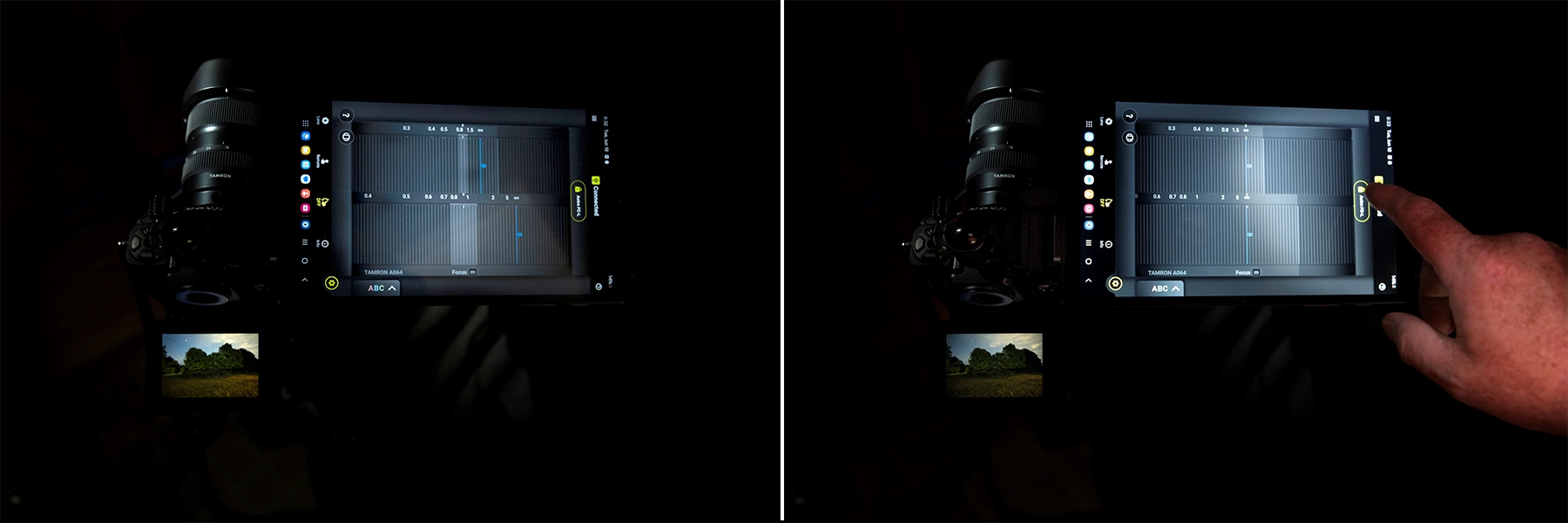
After that, all that’s left is to set your exposure and press the shutter. The first time I used this feature, I was genuinely surprised by how convenient and effortless it was.
Use the Astro Focus Lock Without a Smartphone
If your lens is equipped with a Focus Set Button, you can set it to activate the [Astro FC-L]. This means that even without the Android smartphone, you can direct your lens to focus to its optical infinity focus point.
Fine-Tune Focus in the Field Without Ever Touching the Lens
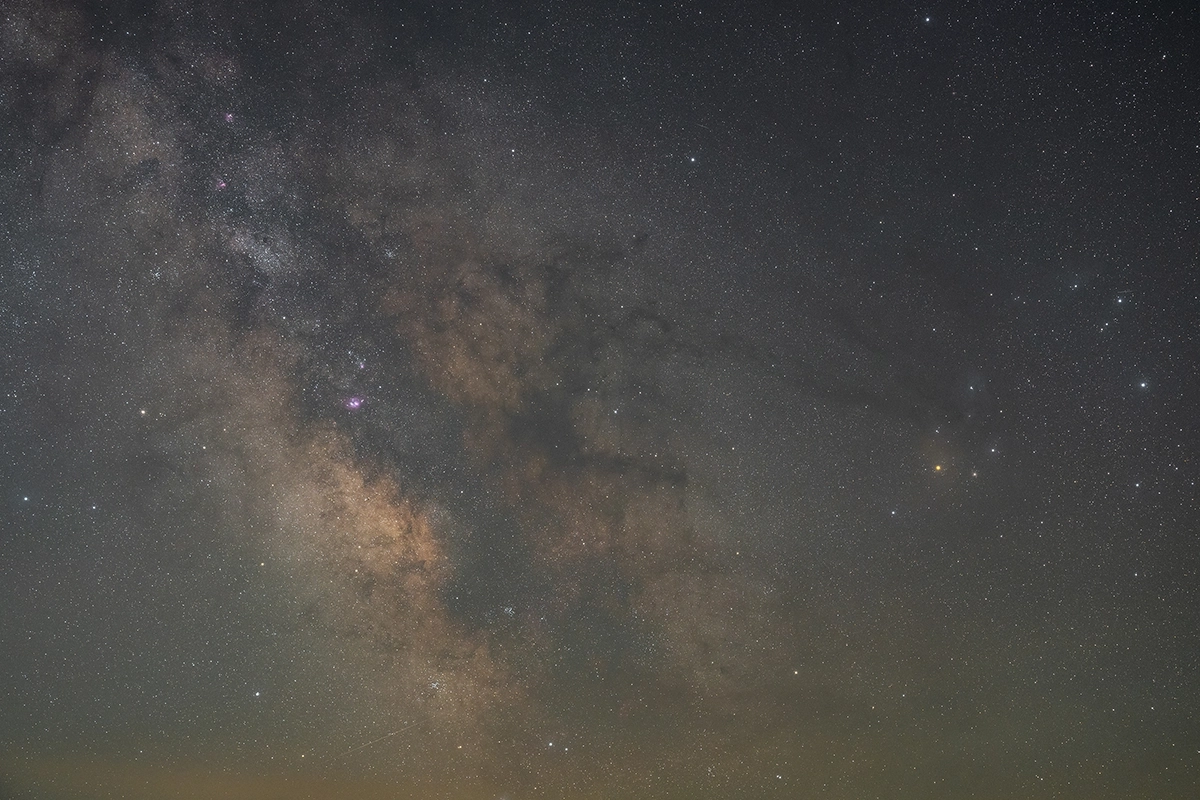
I refer to optical infinity as the designed infinity focus point because, in reality, the position of infinity can shift depending on the shooting environment. Modern lenses incorporate vibration compensation and autofocus mechanisms, involving movement of internal elements. When air temperature drops or humidity rises, these elements can shift based on the materials or optical design—altering the focus point.
In fact, I’ve experienced a situation where a lens did not focus to true optical infinity at 1 °C (33.8 °F). Fortunately, Astro Focus Lock allows for easy fine-tuning even under such conditions. Once you disengage Astro FC-L, the focus can be further adjusted through the app.
As shown in the image below, the left side of the on-screen focus ring is for major adjustments, while the right side handles fine adjustments. Pinching the fine adjustment area enlarges the image, allowing for even more precise control. Being able to adjust focus without touching the lens—especially when shooting outdoors—feels truly revolutionary.
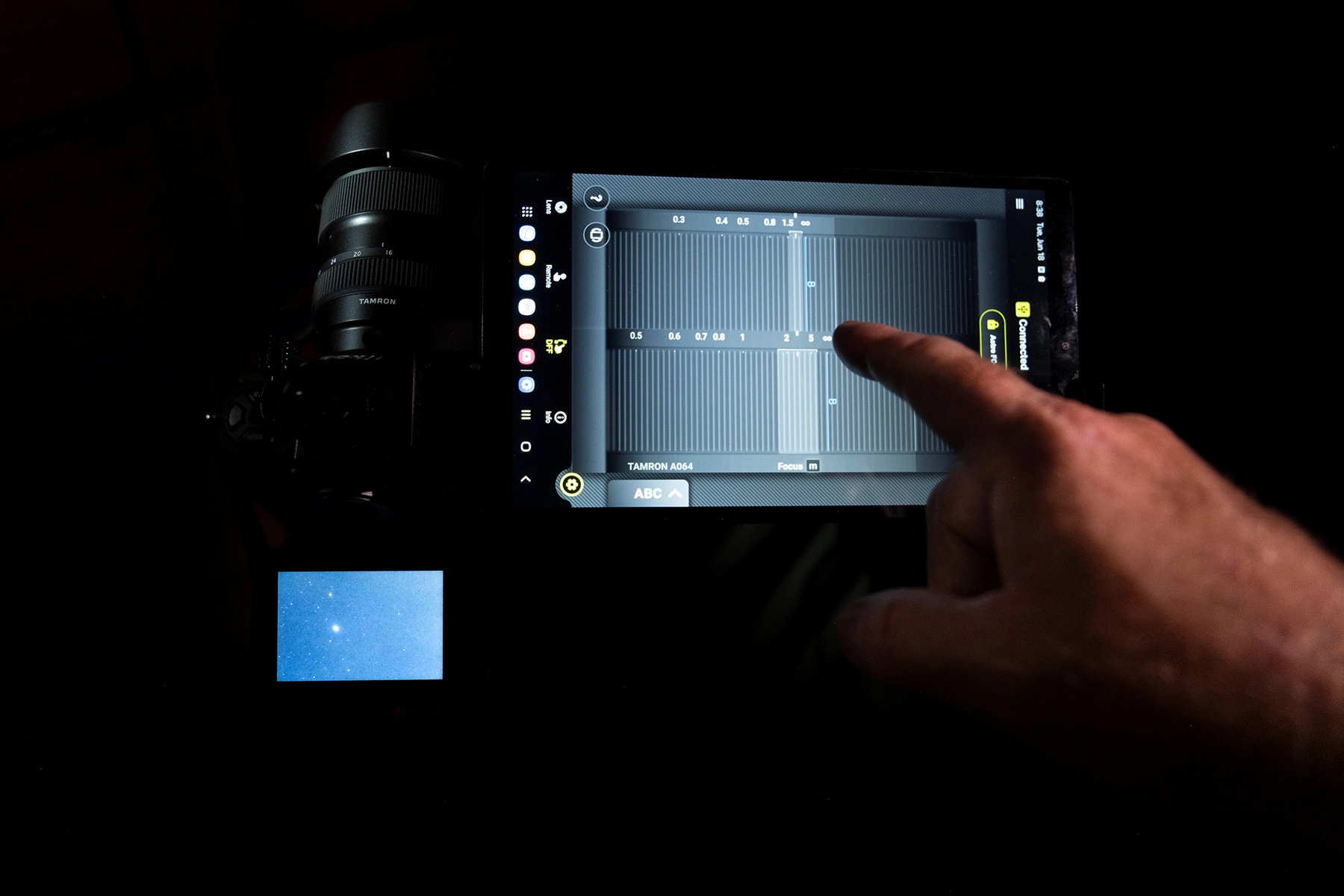
How Soft Filters and Weather Conditions Affect Star Focus
In astrophotography, we sometimes use soft filters to give stars a more glamorous appearance by making them look larger and more diffused. This effect, too, can be influenced by air temperature and humidity.
During one session at 6 °C (42.8 °F), I was still able to adjust the focus to optical infinity without any issues. However, as noted earlier, the focal point can shift depending on environmental conditions. That’s why I strongly recommend checking focus regularly throughout your shoot to ensure your images remain sharp.
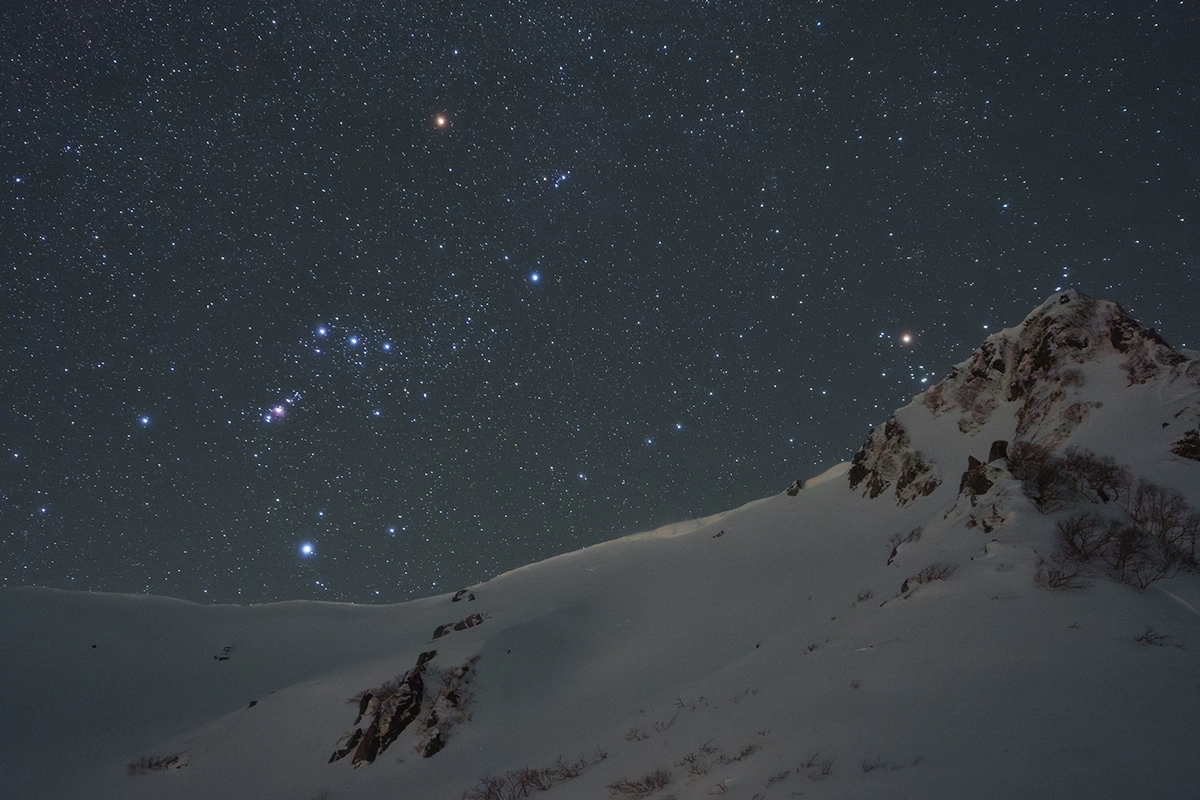
Instantly Reacquiring Infinity Focus With a Single Tap
With a simple tap, you can instantly set focus on the night sky—and keep it there. Even with a lens heater attached, you can make focus adjustments without ever touching the lens’s focus ring.
After Trying Out the New Astro Focus Lock in TAMRON Lens Utility

Focus adjustment in astrophotography has long been a challenge for many photographers who admire capturing the night skies. I believe TAMRON’s Astro Focus Lock (Astro FC-L) feature in the Lens Utility will go a long way in helping solve that issue. I encourage everyone to take advantage of this revolutionary new focusing tool and embrace the challenge of photographing the stars.
Learn More About the TAMRON Lens Utility
TAMRON Lens Utility is dedicated software that can customize functions and update the firmware of TAMRON lenses equipped with a Connector Port (USB Type-C) using a computer or a smartphone. Personalizing lens settings to match your shooting style allows you to be more creative and makes photography more fun.
See more about the 4.0 Version>
Hiroyuki Narisawa’s Favorite Tamron Lenses for Astrophotography
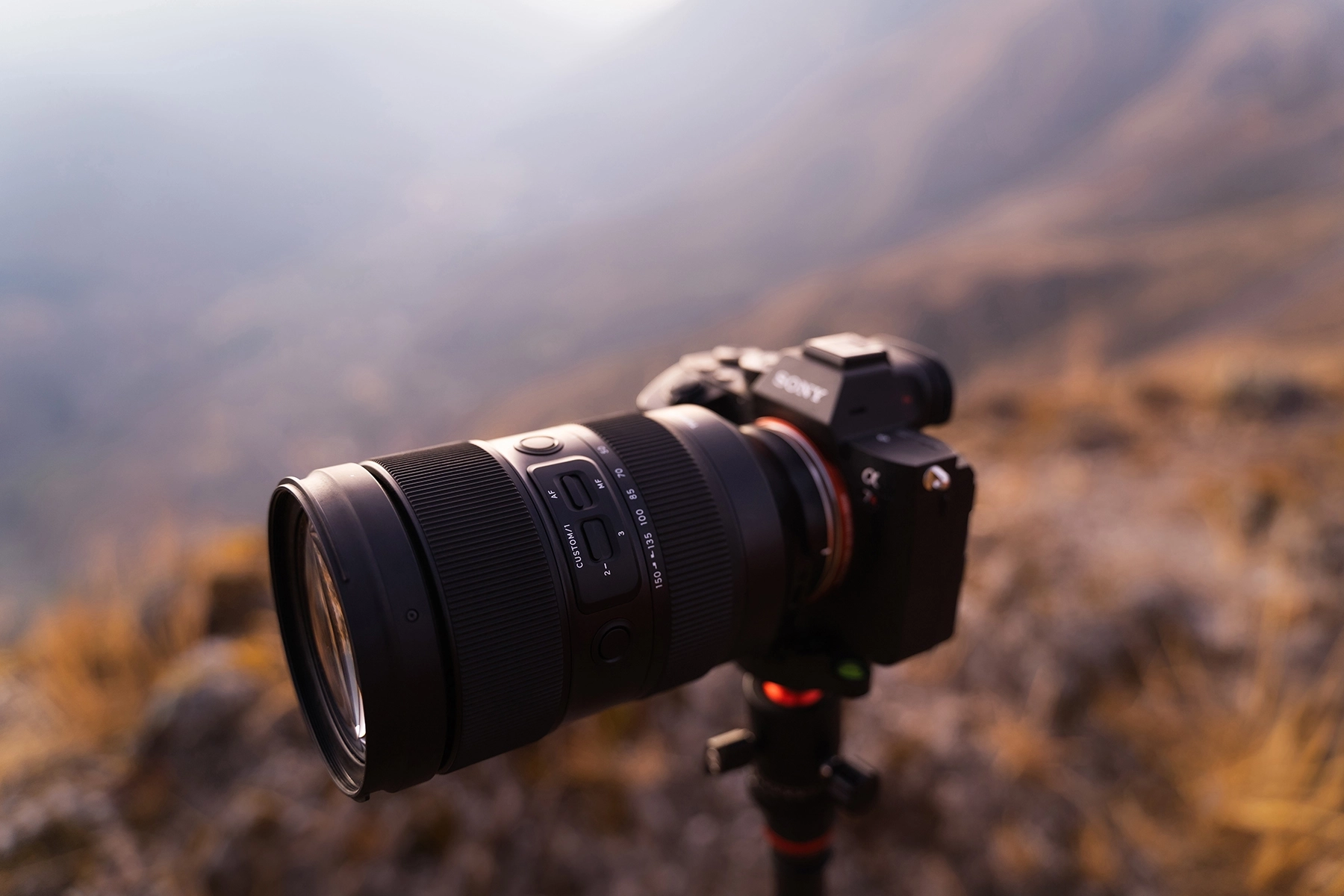
Tamron 20-40mm F/2.8 Di III VXD (for Sony E-mount)
Why it’s ideal: Lightweight ultra-wide to standard zoom, ideal for capturing expansive night sky scenes with fast aperture and compact design.
Tamron 28-75mm F/2.8 Di III VXD G2 (for Sony E and Nikon Z)
Why it’s ideal: Versatile and sharp, perfect for more detailed compositions of the Milky Way and night landscapes.
Tamron 35-150mm F/2-2.8 Di III VXD (for Sony E and Nikon Z)
Why it’s ideal: A premium zoom with exceptional image quality, great for deep-sky astrophotography with precise framing options.
Final Thoughts
With night sky photography becoming more accessible, tools like TAMRON’s Astro Focus Lock give photographers a major advantage in producing crisp, detailed star images in any condition. Whether you’re shooting the Milky Way, constellations, or deep-sky objects, having dependable infinity focus means you can spend more time composing your shot and less time troubleshooting. For creators who want sharper results, a smoother workflow, and more confidence on location, Astro Focus Lock is one of the most impactful upgrades you can make to your astrophotography toolkit.
Learn more about Tamron lenses and the Tamron Lens Utility™ at an authorized Tamron dealer near you or visit the TAMRON Store.
About Hiroyuki Narisawa
Born May 31, 1980. From Rumoi, Hokkaido. Currently living in Saitama Prefecture. Night sky photographer, time-lapse creator, and YouTuber. Full member of the Japan Professional Photographers Society (JPS). Fujifilm Academy X instructor, Nikon NPS member. Holds numerous night sky photography seminars at camera specialty stores and mass retailers across the country. Serialized articles in camera magazines and web magazines. Shoots general astronomical sky photography (night sky and celestial bodies) and time-lapse of a wide range of subjects. He is particularly skilled at expressing the time-lapse of sunsets, stars, and sunrises, known as the “Holy Grail”. After working at a photo studio and a telescope manufacturer, he became independent in April 2020. He began his activities as a YouTuber in earnest to hone his video shooting and editing skills. He strives to disseminate a variety of information. Website | YouTube
People Also Ask
1. How do you get sharp focus in night sky photography?
Sharp focus is achieved by setting your lens precisely to infinity and confirming star sharpness through magnified live view. Tools like Tamron’s Astro Focus Lock make this process faster and more accurate.
2. Why is infinity focus important for astrophotography?
Infinity focus ensures that stars appear crisp and pinpoint, which is essential for capturing clean Milky Way and night sky images.
3. What causes blurry stars in long-exposure photos?
Blurry stars are usually caused by incorrect focus, temperature-related lens shifting, or accidental movement of the focus ring.
4. How does temperature affect focus in night photography?
Cold or rapidly changing temperatures can shift the lens’s internal elements, slightly altering true infinity focus.
5. Can you use autofocus for stars at night?
Most cameras struggle to autofocus on stars because they are too dim, making manual or app-assisted focus techniques more reliable.
6. What’s the easiest way to focus on stars for beginners?
Using a tool like Astro Focus Lock is the easiest method because it sets precise infinity focus instantly with no manual adjustments.
Frequently Asked Questions About the Tamron Lens Utility Astro Focus Lock Feature
1. What is Tamron’s Astro Focus Lock and how does it help Astrophotographers?
Astro Focus Lock is a feature in the TAMRON Lens Utility™ that automatically sets the lens to its optical infinity point. It removes guesswork and helps maintain sharp star focus even as environmental conditions change throughout the night.
2. Which Tamron lenses work with Astro Focus Lock?
Any Tamron lens equipped with a USB-C connector port and compatible with the TAMRON Lens Utility™ can use Astro Focus Lock, including popular models like the 20–40mm F2.8, 28–75mm F2.8 G2, and 35–150mm F2–2.8.
3. Can I fine-tune focus after using Astro Focus Lock?
Yes. The TAMRON Lens Utility™ app lets you make micro-adjustments without touching the lens, which is extremely useful when using lens heaters or shooting in cold weather.
4. Do I need a smartphone to activate Astro Focus Lock?
Not necessarily. If your lens has a Focus Set Button, you can assign Astro FC-L to it and activate the feature without a phone—ideal for remote locations or quick adjustments.
5. How does Astro Focus Lock handle temperature-related focus shifts?
The system compensates for optical changes caused by temperature or humidity fluctuations, allowing photographers to reset or fine-tune true infinity focus at any time during the shoot.
6. Is Astro Focus Lock a good tool for beginners?
Absolutely. It dramatically simplifies the most challenging part of astrophotography—achieving perfect focus—helping beginners get sharp, usable images with confidence.
